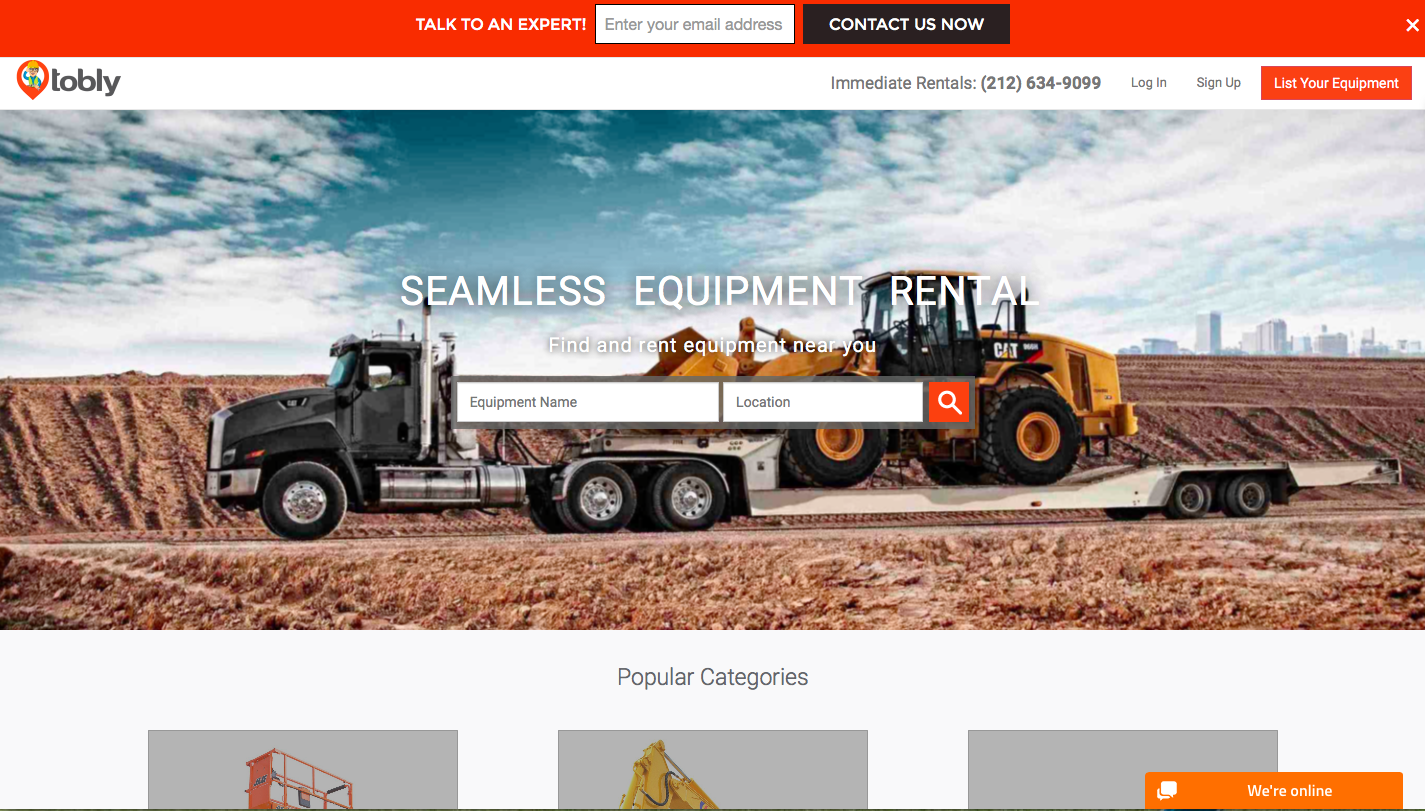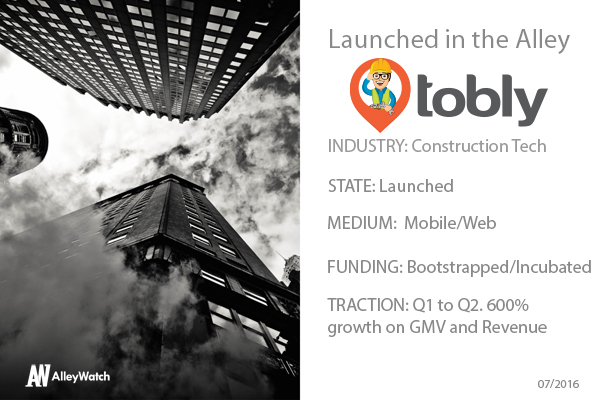Construction requires some very specific tools and heavy equipment and while you may be able to borrow certain things, you can’t always jimmy out a fork lift from your neighbors. So what is the ideal solution for renting construction equipment? The answer is Tobly. It’s dubbed as an one-of-a-kind rental platform connecting niche machinery to buildings; guaranteeing the best rates. So the next time you need a scissor lift, backhoe, or boom lift, you will know where to go.
Today we sit down with the equipment experts and to take an inside look at the construction startup scene.
Tell us about the product or service.
Tobly is a cloud-based construction rental platform with the vision of connecting machines to buildings. Currently, our product offers the easiest way to rent construction equipment by providing a platform where people can find the equipment they need, see upfront pricing and book online. Moreover, our platform allows users to manage the entire lifecycle of the rental process.
How is it different?
Tobly greatly simplifies the construction equipment rental process and offers an intuitive rental lifecycle process.
We have built a technology layer on top of a very fragmented industry. We partner up with local suppliers and connect them with local renters. (A Sharing Economy Model).
Our main focus is to make the transaction easy; we achieve this by offering upfront pricing and guaranteed availability in a one stop destination for all rental needs.
What market are you attacking and how big is it?
We are attacking the rental and plant hire industry, this covers: aerial, earthmoving, material handling and temporary climate control equipment, among others.
The equipment rental industry US accounts for $40B annually and over $150B globally. It is also one of the only industries today that is bound to grow substantially as the cost of ownership is too high for users and equipment is becoming more specific, time-sensitive, efficient and smarter.
What is the business model?
Like many marketplaces, we charge a small fee to the end user for the convenience of using our service. Our suppliers compensate us for the increase on rental volume and we recently implemented an insurance component to add to the revenue stream. As we continue to grow we will start looking at alternative revenue streams.
What inspired the business?
While studying Environmental Engineering in Shanghai I was exposed at many different concepts of sustainable development. One idea that always stuck with me comes from a TED Talk by Alex Steffan “the Sharable Future of Cities” where he uses the example of a power drill (Drills have thousands of hours in their lifetime, most Americans own a drill but the average use is about 6 to 20 min in their lifetime), to exemplify that in communities we do not need the assets permanently, but we just need access to the capacity of things.
Through my professional career, I have been in charge of projects that required equipment rentals. From mechanical systems fabrication and general construction, to wind power generators installations. Through the past 10 years the experience of searching and booking the different equipment needed has been consistently poor.
When deciding what my next business was going to be, the need for a better customer experience in equipment rental and the environmental impact sharing economy could have on this industry drove my decision to help make things easier in this incredibly big and fragmented industry.
Why do you think you can build a viable business around tool rentals for construction?
We believe we can build a viable business because we know have built a more efficient way for the transactions to happen and the demand for our service is quickly growing.
What are the milestones that you plan to achieve within six months?
We want to continue to grow as fast as we have been, open up new product lines and new geographies. There is a line up of cities that we will share later this year.
What is the one piece of startup advice that you never got?
There are a couple:
- Every one says to build an MVP (minimum viable product), but what they failed to explain is that an MVP can be as simple as a landing page explaining your value proposition.
- Most investors invest in trends (AR, Drones, etc). If you are outside those trends, you need to align with the trendsetters.
If you could be put in touch with anyone in the New York community who would it be and why?
Mayor Bill de Blasio. I believe our solution could be a great way for the city to not only save money but support sustainability and save money.
Why did you launch in New York?
NYC is not only the second largest construction market in the United States, but due to its complexity, it presented a great opportunity to create and test out our hypothesis much faster than we would elsewhere.
What’s your favorite rooftop bar in NYC to unwind?
Either Rooftop at the Soho House or Spyglass Rooftop Bar.





